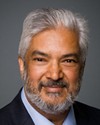Thank you. Bonjour, tout le monde. Good afternoon.
Thank you for the opportunity to present to the committee. The title of this presentation is a somewhat intimidating one—about practical solutions for what is historically an intractable problem—but we'll give it our best shot.
Four years ago, the Canadian Physiotherapy Association and the Alliance of Physiotherapy Regulators co-published a document on foreign credential recognition in Canada for physiotherapists. The research for that document was funded by the foreign credential recognition program at HRSDC. We're grateful for the assistance the government has provided us to examine this problem. We were very keen at the time to tackle those issues, and we continue to be keen to tackle those issues.
Approximately 13% of all physiotherapists currently practising in Canada were trained in another country. Also, 13% of our membership has trained in another country. And we see that trend continuing as the demand for physiotherapy grows.
The study we undertook identified a number of structural barriers I'm sure you're all familiar with—poor pass rates for qualifying exams, the length of time it takes for applicants to be declared eligible for the exam and subsequently to be licensed. Language skills were considered a significant barrier, as well as cultural differences, in understanding the context of Canadian health care vis-à-vis the candidates' countries of origin. The information provided during the immigration process was identified as being a key area or a key shortcoming. Finding employment during and after the integration process was a problem four years ago. And finally, the cost of running the system was prohibitive.
So the physiotherapy community came together and undertook a notable and significant effort to address these issues, which resulted in a physiotherapy language benchmark established in 2009. It helps people identify what the goals or objectives are for their language. We developed an online language test that's available to examine candidates. We developed an online pre-assessment tool to determine how one compared to the Canadian equivalent.
In 2009, only two years after the publication of the study, we ran the first comprehensive bridging program at Ryerson for internationally trained physiotherapists. That program is now at the University of Toronto. Two new programs will be starting up in 2012, and we have profession-specific language training within those three programs.
So we've done a substantial amount of work to address the findings from the 2007 study. However, frankly, we have seen absolutely no impact on the time it takes for a physiotherapist with an overseas credential to be recognized and licensed—mostly because these programs are new. From 2009 to today, we don't really have enough data and enough experience to be able to optimize the programs.
Our problems now are more about running the program and developing an understanding and a reasonable set of expectations, versus the issues of its implementation that we faced a few years ago. Perhaps most substantially, physiotherapy in Canada is significantly different from physiotherapy in most other non-Commonwealth countries, even compared with the competencies of our American counterparts. More often than not, the Canadian standard is significantly above the expectations of overseas-trained candidates. So that continues to be a significant issue. We don't wish to compromise the success story of Canadian physiotherapy, but at the same time we recognize that we must do more to accommodate those candidates.
We're looking at practical solutions now. We recognize that the time it takes for candidates to get through this process is too long. We need more administrative capacity—there's a backlog right now, and we have well-intentioned folks working on credential recognition—but we currently have a nine-month backlog before we even look at a candidate's profile. And by “we”, I'm talking about the physiotherapy community. It's not our association that does it; it's contractors for the Alliance of Physiotherapy Regulators. So the backlog is significant.
Concerning access to practicums, we recognize that it's very important for these candidates to have an opportunity to work in the rehabilitation community. But access to those practicums is extremely difficult.
It's difficult for students in physiotherapy programs. Physiotherapy is delivered 50% in the private sector, so we're asking small business owners to find opportunities to provide these practicums. That's proving to be challenging, as it is for physiotherapy students.
We want better credentials data. We want to get a much better sense of what the equivalents are in other jurisdictions, and we are making some progress with the World Confederation for Physical Therapy. We just launched a program in June, a new database that will allow us to develop a much better understanding of these credentials before the candidates enter the system.
We heard there was a Deloitte study released today about the importance of getting this right. We're keen on doing our part to get it right. We see the most practical solution as doing our homework on behalf of the physiotherapy community and working with Immigration Canada and the various stakeholders.
A good example is a recent negotiation between the Quebec regulators and the French government, which recognizes their equivalent to physiotherapists as what we call a thérapeute en réadaptation de physiothérapie in Canada. Perhaps the simplest but least satisfactory solution is a reasonable expectation that somewhere between three to four years is how long it should take to have these credentials recognized and have these workers integrated into our system. It doesn't necessarily solve the problem, but we're not sure we can do better than that. We'd love to talk about how we could do this, but when we look at the difference between Canadian physiotherapists and those who are operating in many of these other countries, we're not sure we can beat that.
Thank you.



